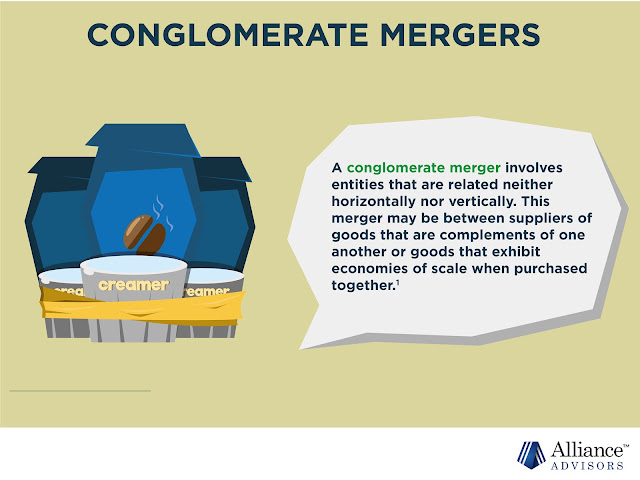Conglomerate Merger
What is a 'Conglomerate Merger'
A conglomerate merger is a merger between firms that are involved in totally unrelated business activities. These mergers typically occur between firms within different industries or firms located in different geographical locations. There are two types of conglomerate mergers: pure and mixed. Pure conglomerate mergers involve firms with nothing in common, while mixed conglomerate mergers involve firms that are looking for product extensions or market extensions.
Advantages
Despite its rarity, conglomerate mergers have several advantages: diversification, an expanded customer base, and increased efficiency. Through diversification, the risk of loss lessens. If one business sector performs poorly, other better-performing business units can compensate for losses. The merger allows the firm to access a new pool of customers, thereby expanding its customer base. This new opportunity allows the firm to market and cross-sell new products, leading to increased revenues. For example, Company A, specializing in manufacturing radios, merges with Company B, which specializes in manufacturing watches, to form Company C. Company C now has access to a large customer base to which it can market its products to (e.g. Company A's product to Customer B's customers, and vice versa). In addition to increased sales from a larger market, the new firm benefits with increased efficiencies when each merged company contributes best practices and competencies that enable the firm to operate optimally




Comments
Post a Comment